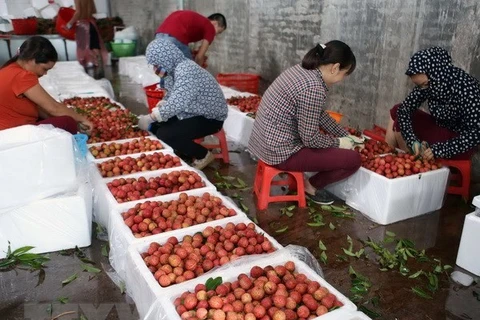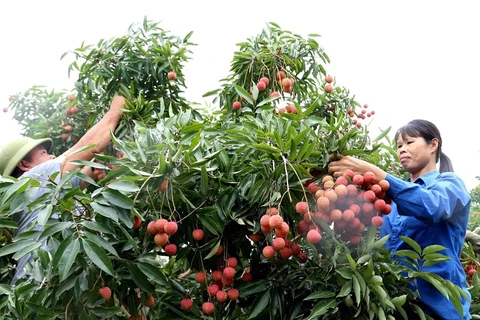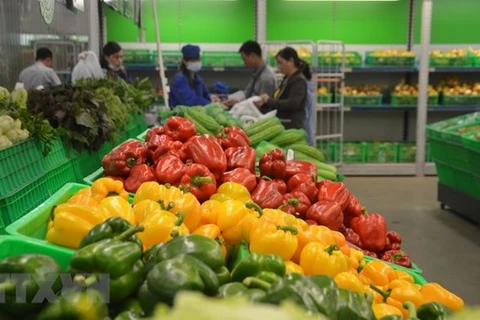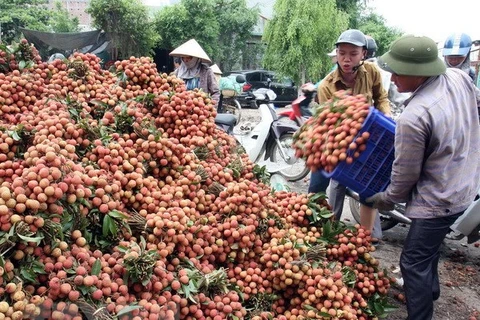 Bac Giang province has an estimated output of over 160,000 tonnes of lychees this year. (Photo: thoibaonganhang.vn)
Bac Giang province has an estimated output of over 160,000 tonnes of lychees this year. (Photo: thoibaonganhang.vn) Hanoi (VNS/VNA) – The northern province of Bac Giang will promote domestic consumption of lychees due to difficulties faced in exporting this kind of fruit this year.
If Bac Giang could not export lychees this year due to the COVID-19 pandemic, the province would focus on promoting domestic consumption as Vietnam is a potential market with about 90 million people, according to Chairman of the Bac Giang provincial People's Committee Duong Van Thai.
This is one of the province's three scenarios for consuming this fruit this year. The other two scenarios are lychees could still be exported, Thai said.
This year, Bac Giang province has over 28,000ha of lychees with an estimated output of over 160,000 tonnes, an increase of 10,000 tonnes year-on-year.
Of which, Bac Giang has 19 lychee growing areas granted codes by Japanese side to export lychees with a total area of 103ha, and an estimated output of 600 tonnes in Yen The and Luc Ngan districts.
According to the Ministry of Industry and Trade, customs clearance for import and export goods is still being implemented slowly at the northern border gates due to the strict pandemic prevention measures. This has affected the export of many kinds of fruit, including lychee.
The ministry has recommended enterprises exporting farm produce, including lychees, to consider transporting of export goods by train to reduce volume of goods getting held up at the border gates.
Minister of Agriculture and Rural Development Nguyen Xuan Cuong said his ministry has actively worked with provinces and cities producing agricultural products, especially Bac Giang and Hai Duong which account for 50 percent of the total lychee output nationwide, to develop solutions on boosting consumption of those products.
In 2020, Hai Duong has a total lychee area of about 9,750 hectares producing an estimated output of 45,000 tonnes, nearly double compared to 2019./.
VNA























